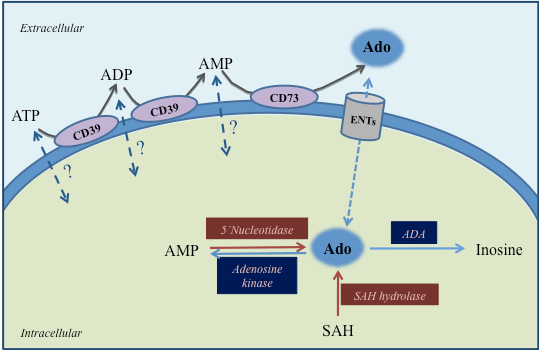
 |
| Figure 2: Extracellular and intracellular sources of adenosine Different types of enzymes are involved in the generation of adenosine in mammalian cells. ATP is firstly hydrolized by ectonucleotide triphosphate diphosphohydrolase (CD39) to generate ADP, which is then converted via this ectoenzyme to AMP. This nucleotide is finally converted to adenosine (Ado) via ecto-5’-nucleotidases (CD73). Adenosine is then taken up by the cells by human equilibrative nucleoside transporters (ENTs) reaching the intracellular space where it is metabolized into AMP in a reversible process involving adenosine kinase and 5’-nucleotidases, or converted into inosine via the adenosine deaminase (ADA). Intracellularly, adenosine is generated from the metabolism of S-adenosylhomocysteine (SAH) via SHA hydrolases. Alterantively, it is suggested that ATP, ADP and AMP could be released from the cells via unknown mechanisms (?). From data in references [19-23]. |